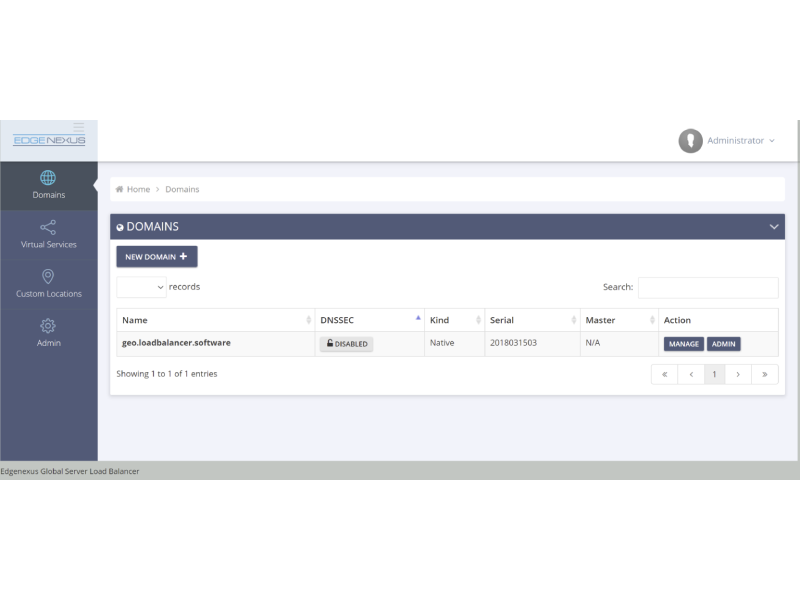In the digital age, where instantaneous connectivity is paramount, the efficacy of network infrastructure stands as a linchpin for seamless operations. Among the pivotal components shaping network efficiency is the Load Balancer. Its role in distributing incoming network traffic across multiple servers ensures optimal resource utilization, high availability, and enhanced performance. However, as businesses expand globally and user bases diversify, traditional load balancing solutions face challenges in maintaining uniform performance across geographically dispersed servers. This is where the concept of a Global Server for Load Balancer emerges as a transformative solution, promising to revolutionize the dynamics of traffic management on a global scale.
Leveraging The Global Server For Load Balancer
At the core of the Global Server for Load Balancer lies the ability to centralize traffic management operations across distributed server locations. Unlike conventional load balancers confined to local environments, a global server transcends geographical boundaries, consolidating traffic orchestration into a unified framework. This centralized approach enables organizations to wield greater control over their network infrastructure, streamlining administration, and bolstering scalability. By harnessing the power of a global server, businesses can optimize resource allocation, mitigate latency issues, and deliver a consistent user experience irrespective of geographical constraints.

Seamless Traffic Management With Global Server For Load Balancer
The essence of seamless traffic management lies in the ability to dynamically adapt to fluctuating demand patterns and network conditions. Leveraging a Global Server for Load Balancer equips organizations with the agility to respond to these challenges in real-time. Through intelligent algorithms and sophisticated routing mechanisms, traffic can be intelligently directed to the most suitable server instance, minimizing response times and maximizing throughput. This granular control over traffic distribution ensures optimal performance across diverse user demographics, fostering customer satisfaction and brand loyalty.
Global Server For Load Balancer Implementation
Implementing a Global Server for Load Balancer entails a strategic fusion of hardware, software, and network architecture tailored to meet the unique demands of global-scale operations. From selecting robust server infrastructure to deploying specialized load balancing algorithms, each facet of implementation necessitates meticulous planning and execution. Moreover, seamless integration with existing IT ecosystems and adherence to industry best practices are imperative to ensure a smooth transition and uninterrupted service delivery. By investing in a comprehensive implementation strategy, organizations can unlock the full potential of a global server, redefining the benchmarks for network reliability and performance.
Global Server For Load Balancer Solutions
In the realm of load balancing solutions, the emergence of Global Server architectures has spurred a wave of innovation, offering organizations a diverse array of options to cater to their specific needs. Whether it be cloud-based load balancers leveraging distributed edge nodes or on-premises solutions with global traffic management capabilities, the market abounds with offerings tailored to different use cases and business requirements. Additionally, advancements in software-defined networking (SDN) and virtualization technologies have further expanded the horizons of load balancing solutions, paving the way for hybrid deployments and multi-cloud architectures. By evaluating these solutions through the lens of scalability, reliability, and cost-effectiveness, organizations can chart a path towards sustainable growth and competitive advantage.
Global Server For Load Balancer Deployment
The deployment phase marks a critical juncture in the journey towards harnessing the power of a Global Server for Load Balancer. Whether opting for a phased rollout or a comprehensive deployment strategy, meticulous attention to detail is paramount to ensure success. Factors such as network topology, server capacity, and redundancy configurations must be meticulously evaluated to mitigate potential bottlenecks and points of failure. Furthermore, stringent testing protocols and contingency plans are essential to preemptively address any unforeseen challenges that may arise during the deployment process. By adhering to industry best practices and leveraging the expertise of seasoned professionals, organizations can navigate the complexities of deployment with confidence and poise.
Global Server For Load Balancer Integration
Integration lies at the nexus of synergy between disparate components within an IT ecosystem, and the integration of a Global Server for Load Balancer is no exception. Seamlessly interfacing with existing infrastructure, applications, and management platforms is essential to unlock the full potential of this transformative technology. Whether integrating with cloud service providers, container orchestration frameworks, or software-defined networking solutions, interoperability is key to fostering a cohesive and resilient network architecture. Moreover, proactive monitoring and automation capabilities play a pivotal role in ensuring the continuous optimization of load balancing policies and resource allocation. By fostering a culture of collaboration and interoperability, organizations can harness the true power of a Global Server for Load Balancer to drive innovation and accelerate business growth.
The Impact Of Global Server For Load Balancer
The adoption of a Global Server for Load Balancer heralds a paradigm shift in the realm of network infrastructure, with far-reaching implications for businesses across industries. From enhancing user experiences and bolstering application performance to optimizing resource utilization and facilitating seamless scalability, the impact is multifaceted and profound. By transcending the constraints of traditional load balancing solutions, organizations can unleash newfound agility and resilience, poised to navigate the complexities of a rapidly evolving digital landscape. Moreover, the ripple effects extend beyond technical domains, influencing strategic decision-making, market competitiveness, and ultimately, the bottom line. As organizations embrace the transformative power of a Global Server for Load Balancer, they embark on a journey towards sustained innovation and unparalleled success in the digital age.
Conclusion
The advent of a Global Server for Load Balancer represents a watershed moment in the evolution of network infrastructure, offering a compelling solution to the challenges of global traffic management. Through centralized orchestration, intelligent routing, and seamless integration, organizations can transcend geographical barriers and deliver unparalleled user experiences on a global scale. However, realizing the full potential of this transformative technology demands a holistic approach encompassing strategic planning, meticulous implementation, and ongoing optimization. By embracing innovation and agility, organizations can harness the power of a Global Server for Load Balancer to drive sustainable growth, foster customer loyalty, and maintain a competitive edge in an increasingly interconnected world.
Resource Links
https://en.wikipedia.org/wiki/Load_balancing_(computing)
https://cloud.gov.in/services_lb.php
https://www.edgenexus.io/products/global-server-load-balancing/

Geraldine Blackwell, a beacon of creativity hailing from the vibrant landscapes of Canada, pens tales that dance with the rhythm of life. With a heart attuned to the whispers of the world, she spins stories that illuminate the beauty of human connection and the wonders of existence. Through her words, Geraldine invites readers to embark on journeys of introspection and discovery, where each page unfolds like a cherished memory, resonating with warmth and authenticity.




